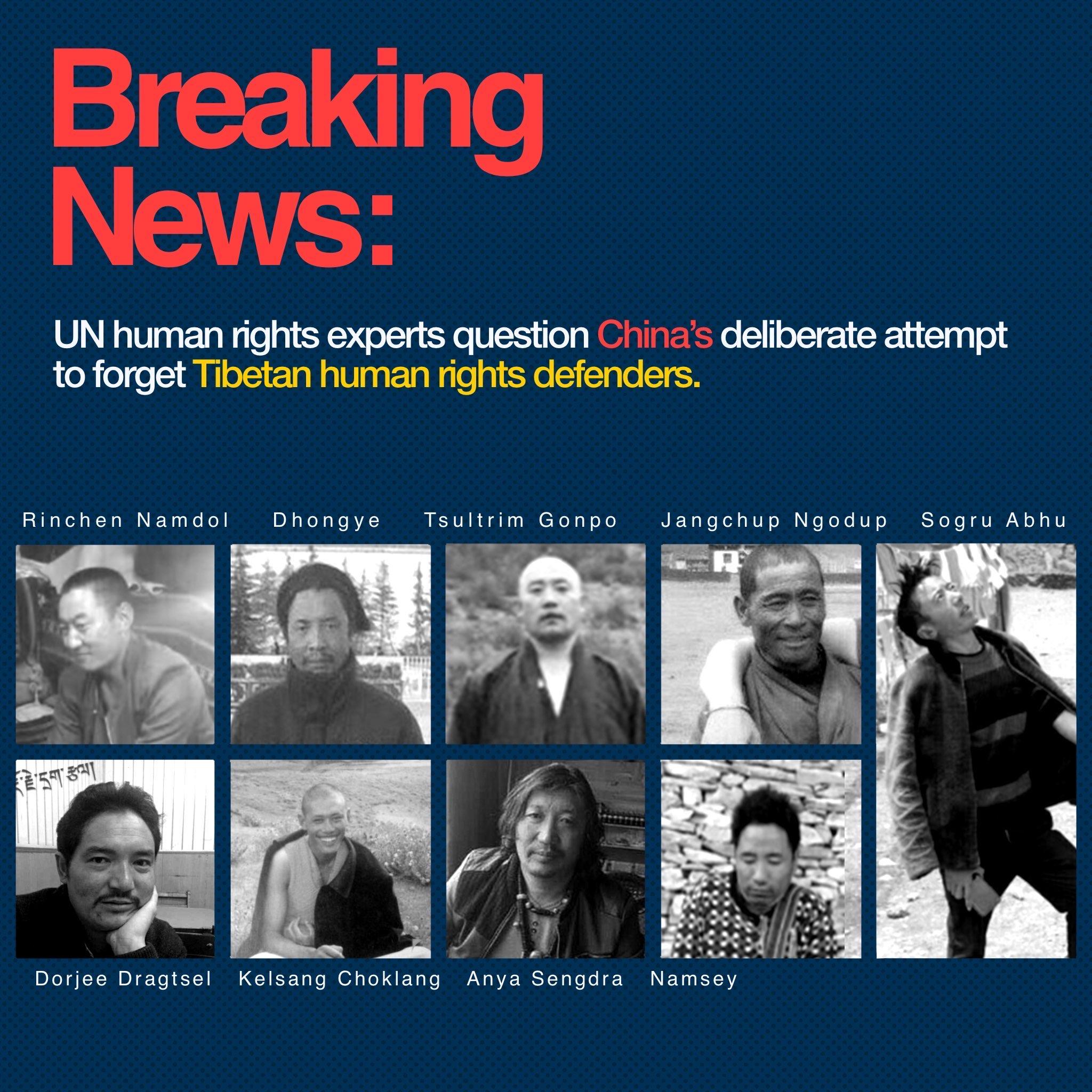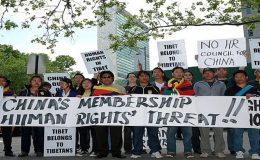Repression and Environmental Damage Renew Tibetan Calls for
Occupied Tibet to Become a “No Extraction Zone”
UN human rights experts have raised urgent concern and pressed the Chinese government to provide information about nine Tibetan environmental human rights defenders serving prison sentences of up to 11 years. [1]
The statement was issued by Special Rapporteurs on human rights defenders, freedom of peaceful assembly and of association, and sustainable environment [2] and specifically raised the cases of nine Tibetan human rights defenders who were imprisoned between 2010 and 2019 as a result of their peaceful work to protect Tibet’s fragile environment.
The UN human rights experts added that China had not been forthcoming with information about the detainees, in what appeared to be “a deliberate attempt to make the world forget about these human rights defenders as they spend year after year in isolation.”
The nine Tibetans identified in the release — A-Nya Sengdra, Dorjee Daktal, Kelsang Choklang, Dhongye, Rinchen Namdol, Tsultrim Gonpo, Jangchup Ngodup, Sogru Abhu and Namesy — were all detained after they protested illegal mining activities or exposed the poaching of endangered species. A further 40-plus Tibetan environmental defender cases have been documented since 2008 by the International Campaign for Tibet. [3]
Tibetans and Tibet activists have welcomed the statement and said it highlights the need for governments to support a moratorium on mining and mass-development projects in occupied Tibet until Tibetans have full participants in decisions about the projects and the use and extraction of Tibet’s resources. Activists highlight that mining in occupied Tibet is carried out by China and Chinese companies, with no free, prior, informed consent from Tibetans, who have seen their land, sacred sites, and way of life harmed by rapidly spreading extraction projects.
Over the last two decades, Chinese authorities have scaled up mining, [4] energy, infrastructure, and urbanization projects across Tibet which have affected the ecosystem health of the Tibetan plateau. [5] [6] With its vast reserves of rare minerals, including gold, copper, and lithium [7] — essential components of renewable energy infrastructure — and the potential to become a global production centre of ‘green hydrogen’,[8] experts have identified Tibet as a place that could play a central role in the transformation of our global energy systems. However, China’s unregulated and illegal mining projects across Tibet jeopardise the lives and livelihoods of Tibetans and further damage the climate-critical ecosystem.
There are an estimated 240 mines from Chinese companies across Tibet, most of which are in areas previously used for low-impact nomadic herding.[9] Such mining operations have caused serious destruction to the surface morphology and soil, [10] and contaminated rivers and killed livestock. [11] Meanwhile, rural Tibetans such as farmers and nomads have been forcibly relocated in their millions from pastures that they have historically stewarded, and into urban settlements.
Such environmental and social damage exacerbates the already huge toll of climate change on Tibet, with the Tibetan plateau warming at a rate three times faster than the rest of the planet. [12]
This potentially has knock-on effects for the rest of South and Southeast Asia, with at least 1.5 billion people across the continent relying on water from rivers originating in Tibet’s glaciers on a daily basis. [13]
Many Tibetans have tried to resist or raise the alarm about the threat these extraction projects pose to their environment through protests,[14] writing blogs,[15] passing information to the outside world [16] and other non-violent activities.[17], all of which are routinely met with arrest,[18] in violation of Tibetans’ rights under international [19] and China’s own domestic law [20]. Tibetans do not oppose mining outright and have their own rich tradition of metalwork, which is carried out on a smaller scale with less invasive methods, without the use of chemicals and explosives.[21]
The UN experts concluded their statement by warning: “If China is committed to tackle the impacts of climate change, it should refrain from persecuting environmental human rights defenders and release all nine immediately.”
Pema Doma from Students for a Free Tibet said: “We welcome the concern raised by the UN rights experts, which highlights the need for the global community to take stronger action to support Tibetans to end the occupation of Tibet to ensure they are given their rights to freely participate in decisions affecting their lands. Tibet under Chinese Communist Party rule is home to countless injustices, from environmental devastation to abuses of power by local authorities. Tibetans have been standing up against these injustices and challenging China’s rampant destruction of their land for decades. But by taking action to press for climate justice, swaths of Tibetan environment defenders, such as A-Nya Sengdra,[22] have become victims of arrest, facing long prison sentences and torture. ”
Zoe Bedford of Australia Tibet Council said: “The Tibetan people have been the stewards of Tibet’s unique environment for thousands of years yet since the brutal occupation of Tibet the environment has been degraded and irreparably changed, by the Chinese Government without any consultation or consent. There needs to be a moratorium on mega-development including mining in Tibet until such a time when Tibetans have the rights and freedom to participate in decision-making, extractive industries should not be allowed to continue to reap from Tibetans their mineral resources while Tibet is under occupation by China and Tibetans are arrested for protest.”
Tenzin Kunga of Free Tibet said: “For generations, Tibetans have maintained a sustainable relationship with Tibet’s pastures, mountains and rivers, preserving them for future generations. It is a stark contrast with the occupying Chinese government, which attaches a financial value to our water and our minerals and has no hesitation in ripping up the earth and displacing whole communities to harness them. Tibetans should not be forced into an existential struggle in the name of extraction. An international moratorium must be placed on mining and dam construction in Tibet, with no further projects greenlit without the express, informed approval of affected Tibetans.”
Lobsang Yangtso of International Tibet Network said: “Since invading Tibet over 70 years ago China’s policies of infrastructure development, unregulated mining, and rapid urbanisation have aggravated and degraded Tibet’s environment. The knock-on effect of this is massive as Tibet’s grasslands hold a solution to help support curb global carbon emissions and maintaining Tibet’s fragile ecosystem is essential to tackling global climate change. Tibetans who live in Tibet under China’s brutal occupation cannot be part of the conversation, but it is vital that they are part of the solution.”
The vast environmental, economic, cultural, and social damage caused by extraction projects in occupied Tibet, and the lack of participation by Tibetans in how their land is administered, have prompted fresh calls for an international moratorium on extraction in Tibet, including mining and the construction of megadams.
CONTACTS:
John Jones, Free Tibet: +44 7591188383
Lobsang Yangtso, International Tibet Network: +91 88265 07768
Pema Doma, Students for a Free Tibet: +1 617-792-3606
Zoe Bedford, Australia Tibet Council: +61 408 262 576
Note to Editors:
- China: UN Experts Seek Clarification About Nine Imprisoned Tibetan Human Rights Defenders, OHCHR (August 10, 2023), https://www.ohchr.org/en/press-releases/2023/08/china-un-experts-seek-clarification-about-nine-imprisoned-tibetan-human
- Ms. Mary Lawlor, Special Rapporteur on the situation of human rights defenders; Mr. Clément Nyaletsossi Voule, Special Rapporteur on freedom of peaceful assembly and of association; Mr. David Boyd, Special Rapporteur on the issue of human rights obligations relating to the enjoyment of a safe, clean, healthy and sustainable environment
- Environmental Defenders of Tibet: China’s Persecution of Tibetan Environmental Defenders, International Campaign for Tibet (June 2022) https://savetibet.org/wp-content/uploads/2022/08/2205-ICFT-Report_V8.pdf
- Edward Wong, Deadly Tibetan Landslide Draws Attention to the Toll of Mining in Tibet, N.Y. Times (April 2, 2013), https://www.nytimes.com/2013/04/03/world/asia/deadly-tibetan-landslide-draws-attention-to-mining.html#:~:text=Mining%20on%20the%20Tibetan%20plateau,greatly%20expanded%20in%20recent%20years
- “Tibet” refers to all Tibetan areas currently under the jurisdiction of the People’s Republic of China. This includes the Tibet Autonomous Region (Ch: Xizang Zizhiqu), the area west of the Yangtse River, and other Tibetan inhabited areas in the Chinese provinces of Qinghai, Gansu, Sichuan and Yunnan.
- Ji Zhang et al., How Urbanization Affect the Ecysystem Health of Tibet Based on Terrain Gradients: A Case Study of Shannan, China (July 9 2022), https://www.tandfonline.com/doi/full/10.1080/20964129.2022.2097449
- Tibet, as a consequence of its geology and formation, reportedly has 132 different types of mineral resources, including copper, gold, iron ore, aluminium, chromite, lithium, coal, crude oil, and natural gas. China has long known that immense riches lie beneath Tibet’s mountains and plains. The Chinese name for Tibet – Xizang – translates roughly to “Western treasurehouse” – Taming the West: The Community Party deepens Tibet’s integration with the rest of the country,The Economist ( June 21 2014) http://www.economist.com/news/china/21604594-communist-party-deepens-tibets-integration-rest-country-taming-west28
- Green hydrogen is produced by using renewable energy to electrolyse water. This process splits water into oxygen and hydrogen gas, producing hydrogen fuel without emitting carbon dioxide. According to a 2022 report by the International Renewable Energy Agency , virtually all of the potential renewable energy to power this process is located in Southern Mongolia, occupied Tibet and the Uyghur region (referred to in the report as “Inner Mongolia, Qinghai, Tibet and Xinjiang”) https://www.irena.org/-/media/Files/IRENA/Agency/Publication/2022/Jul/IRENA_Global_hydrogen_trade_part_1_2022_.pdf, p.45
- Navin Singh Khadka, Tibetans Displaced Within Region ‘Amid Rampant Mining’, BBC News (December 13, 2013), https://www.bbc.com/news/science-environment-25359391
- Yunlong Hu et al., Influence of Mining and Vegetation Restoration on Soil Properties in the Eastern Margin of the Qinghai-Tibet Plateau, 17 Int. J. Environ. Res. Pub. Health 4288 (2020) https://www.mdpi.com/1660-4601/17/12/4288; Fatal Landslide Highlights Tibet’s Environmental Destruction, Free Tibet (April 2, 2013), https://freetibet.org/news-media/na/fatal-landslide-highlights-tibets-environmental-destruction.
- Id.
- With dramatic effects such as shrinking of this region’s glaciers, ice caps, ice sheets, and permafrost which significantly impacts regional and global weather patterns, river systems, and biodiversity.# The Intergovernmental Panel on Climate Change (IPCC) has warned that up to two thirds of the region’s glaciers are on track to disappear in the next 80 years. Even if the international community meets the target of limiting planetary warming by 1.5 degrees above pre-industrial levels, one third of the ice will still be lost by 2100.
- Environment and Development Desk, Central Tibetan Administration (2007); Gabriel Lafitte, Spoiling Tibet: China and Resource Nationalism on the Roof of the World (2013).
- Thousands of Tibetans Protest Mining on Sacred Site, Free Tibet (May 30, 2013),https://freetibet.org/news-media/na/thousands-tibetans-protest-mining-sacred-site; Tibetan Environmental Defender and Former Political Prisoner Passes Away, Free Tibet (March 24, 2020),https://freetibet.org/news-media/na/former-political-prisoner-and-environmental-defender-passes-away.
- China Must Half Persecution of Award-Winning Tibetan Environmentalist Family, Amnesty International (July 8, 2010), https://www.amnesty.org/en/latest/news/2010/07/china-fin-persecucion-familia-ecologista-tibetana/.
- China: Key Tibetan News Source Dies from Ill-Treatment Whilst in Detention, Reporters Without Borders (February 24, 2021, updated March 24, 2021), https://rsf.org/en/news/china-key-tibetan-news-source-dies-ill-treatment-whilst-detention.
- Award-Winning Tibetan Environmentalist on Trial Today, International Campaign for Tibet (July 3, 2010), https://savetibet.org/award-winning-tibetan-environmentalist-on-trial-today/.
- See, e.g., the case of A-Nya Sengdra, a Tibetan environmentalist jailed for seven years on disturbing public order charges. UN Office of the High Commissioner on Human Rights, UN Experts Urge China to Drop Charges Against Jailed Tibetan Minority Human Rights Defender (May 19, 2020),https://www.ohchr.org/en/NewsEvents/Pages/DisplayNews.aspx?NewsID=25894&LangID=E
- See International Covenant on Civil and Political Rights art. 19, 21-22, Mar. 23, 1976, 999 U.N.T.S. 171.
- See Xianfa art. 26, 35, 41 (1982); Zhonghua Renmin Gongheguo Huanjing Baohufa (中华人民共和国环境保护法) [Environmental Protection Law of the People’s Republic of China] (promulgated by the President of the People’s Republic of China, Dec. 26, 1989, effective Dec. 26, 1989).
- Environment and Development Desk, Central Tibetan Administration (2007); Gabriel Lafitte, Spoiling Tibet: China and Resource Nationalism on the Roof of the World (2013).
- UN experts call on China to release Tibetan Nomad, A-Nya Sendgra, 19 May 2020, https://tibetnetwork.org/un-experts_release-anya-sengdra/






Samphe Lhalungpa
August 11, 2023 4:19 amDear friends:
As a very small Tibet Advocacy Group, we find the detailed information on the extent of the CCP’s continuing assaults on the physical, social, cultural, spiritual, political and economic fabric of Tibet deeply problematic. What is particularly galling is that the PRC’s global stance as a good environmental actor in international fora seems to be gaining some traction, in face of their actions on the High Plateau. I am happy that some parts of the UN system take their Human Rights role seriously, because sadly many of the more technical and development focused agencies, duck or maintain a studied blind eye to the situation in Tibet. I say this, as a now retired UN professional with some 23 years of service in S.E, South and Central Asia as well as the Sudan, Nigeria and Somalia.
When next in the U.K, I would be very pleased to meet up with your team to enhance our cooperation.
Thoje Che and Warm Regards
Ottawa, ON
Canada